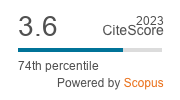Review | Open Access
Past, Present, and Future Perspectives on the Integration of AI Into Walkability Assessment Tools: A Systematic Review
| Views: | 1354 | | | Downloads: | 1103 |
Abstract: This study employs a systematic literature review (PRISMA methodology) to investigate the integration of Artificial Intelligence (AI) in walkability assessments conducted between 2012 and 2022. Analyzing 34 articles exploring data types, factors, and AI tools, the review emphasizes the value of utilizing diverse datasets, particularly street view images, to train supersized AI models. This approach fosters efficient, unbiased assessments and offers deep insights into pedestrian environment interactions. Furthermore, AI tools empower walkability assessment by facilitating mapping, scoring, designing pedestrian routes, and uncovering previously unconsidered factors. The current shift from large-scale spatial data analysis (allocentric perspective) to a ground-level view (egocentric perspective) and physical and perceptual features of walking introduces a subjective lens into current walkability assessment tools. However, the efficacy of current methods in addressing non-visual aspects of human perception and their applicability across diverse demographics remains debatable. Finally, the lack of integration of emerging technologies like virtual/augmented reality and digital twin leaves a significant gap in research, inviting further study to determine their efficacy in enhancing the current methods and, in general, understanding the interaction of humans and cities.
Keywords: artificial intelligence; digital twin; human perception; urban built environment; walkability; walkability assessment; walkable environment
Published:
Supplementary Files:
© Yasin Delavar, Sarah Gamble, Karla Saldana-Ochoa. This is an open access article distributed under the terms of the Creative Commons Attribution 4.0 license (http://creativecommons.org/licenses/by/4.0), which permits any use, distribution, and reproduction of the work without further permission provided the original author(s) and source are credited.




